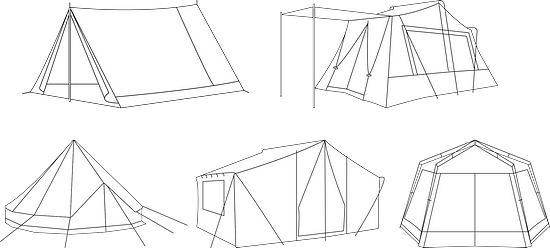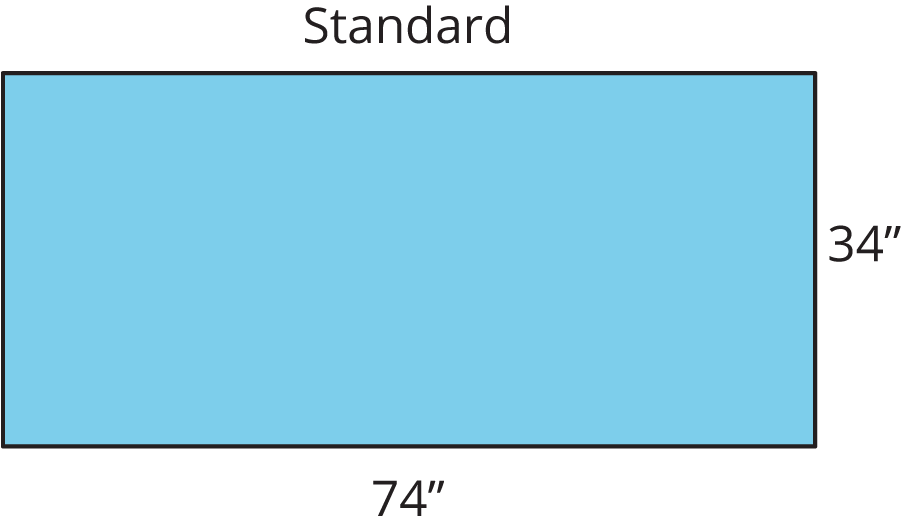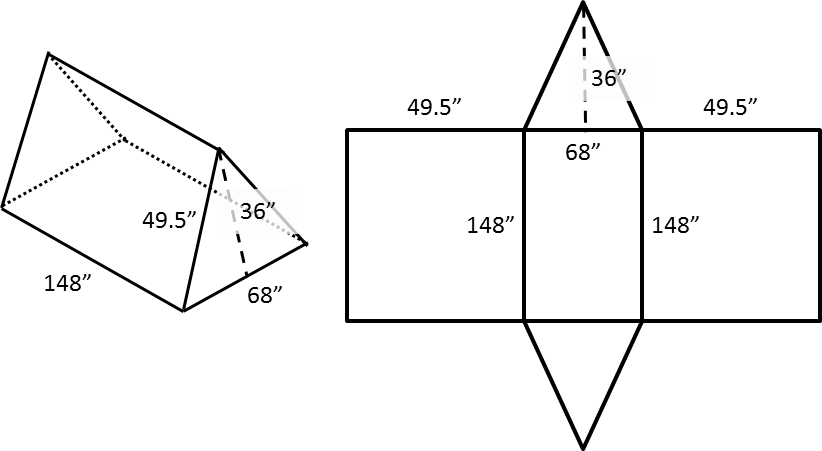Illustrative Mathematics Unit 6.1, Lesson 19: Designing a Tent
Apply what you know about the surface area of polygons to find the area of three-dimensional objects in real-life problems. After trying the questions, click on the buttons to view answers and explanations in text or video.
Return to the list of Illustrative Math lessons
Designing a Tent
Let’s design some tents.
Illustrative Math Unit 6.1, Lesson 19 (printable worksheets)
19.1 - Tent Design - Part 1
Have you ever been camping?
You might know that sleeping bags are all about the same size, but tents come in a variety of shapes and sizes.
Your task is to design a tent to accommodate up to four people, and estimate the amount of fabric needed to make your tent. Your design and estimate must be based on the information given and have mathematical justification.
First, look at these examples of tents, the average specifications of a camping tent, and standard sleeping bag measurements. Talk to a partner about:
- Similarities and differences among the tents
- Information that will be important in your designing process
- The pros and cons of the various designs
Tent Styles

These are provided for inspiration and reference; you are not limited to these designs.
Tent Height Specifications
| height description | height of tent | notes |
|---|---|---|
| sitting height | 3 feet | Campers are able to sit, lie, or crawl inside tent. |
| kneeling height | 4 feet | Campers are able to kneel inside tent. Found mainly in 3–4 person tents. |
| stooping height | 5 feet | Campers are able to move around on their feet inside tent, but most campers will not be able to stand upright. |
| standing height | 6 feet | Most adult campers are able to stand upright inside tent. |
| roaming height | 7 feet | Adult campers are able to stand upright and walk around inside tent. |
Sleeping Bag Measurements
-
Show Image

-
Create and sketch your tent design. The tent must include a floor. (Labeling dimensions will be useful, but your sketches do not need to be to scale.)
-
What decisions were important when choosing your tent design?
-
How much fabric do you estimate will be necessary to make your tent? Show your reasoning and provide mathematical justification.
-
-
Hints
There is no one right design for this question. Choose a number of people you want to accommodate (up to four) and a tent height, and work from there.
You may consider tent designs as prisms, pyramids, or combinations of each. For example, the first tent in the Tent Styles above can be considered a triangular prism, and the fourth design can be considered a pentagonal prism.
If you consider the tent as a polyhedron, which measurement of a polyhedron determines how much fabric is needed to make the tent?
-
See Possible Answers
-
A net is included to help calculate the surface area for the following questions. The measurements of the sloping sides of the triangular prism are approximate.

-
This tent is designed to hold 4 people, and therefore must hold 4 sleeping bags on its floor.
4 sleeping bags can be placed in a 2 × 2 grid to compose a rectangle with dimensions 2(74 inches) × 2(34 inches) = 148 inches by 68 inches. This will be the dimensions of the floor.
The tent is designed to be at sitting height (3 ft = 36 inches).
This design is intended to minimise the amount of fabric required for a tent which accommodates 4 people at sleeping height, but other designs which use even less fabric may be possible. -
The amount of fabric required to build this tent is based on the surface area of the tent.
Surface area = 2(½ × 68 × 36) + (148 × 68) + 2(49.5 × 148) = 27614 in2
In a real-life tent, the floor would have a larger surface area than the exact area of 4 sleeping bags. One con of using a triangular prism as a tent is that this tent is only 3 ft high (sitting height) at its highest point.
-
19.2 - Tent Design - Part 2
-
Explain your tent design and fabric estimate to your partner or partners. Be sure to explain why you chose this design and how you found your fabric estimate.
-
Compare the estimated fabric necessary for each tent in your group. Discuss the following questions:
Which tent design used the least fabric? Why?
Which tent design used the most fabric? Why?
Which change in design most impacted the amount of fabric needed for the tent? Why?
Also discuss:
What are some ways that tents designed to accommodate the same number of people could use very different amounts of fabric?
When calculating the surface area of your tent, what kinds of techniques from this unit did you find useful?
-
See Possible Answers
The number of faces would have the most impact on the amount of fabric needed for the tent, since this increases the surface area of the tent.
Tents with different numbers of faces or different heights would use different amounts of fabric even when they are designed to accommodate the same number of people.
Try out our new and fun Fraction Concoction Game.
Add and subtract fractions to make exciting fraction concoctions following a recipe. There are four levels of difficulty: Easy, medium, hard and insane. Practice the basics of fraction addition and subtraction or challenge yourself with the insane level.

We welcome your feedback, comments and questions about this site or page. Please submit your feedback or enquiries via our Feedback page.

